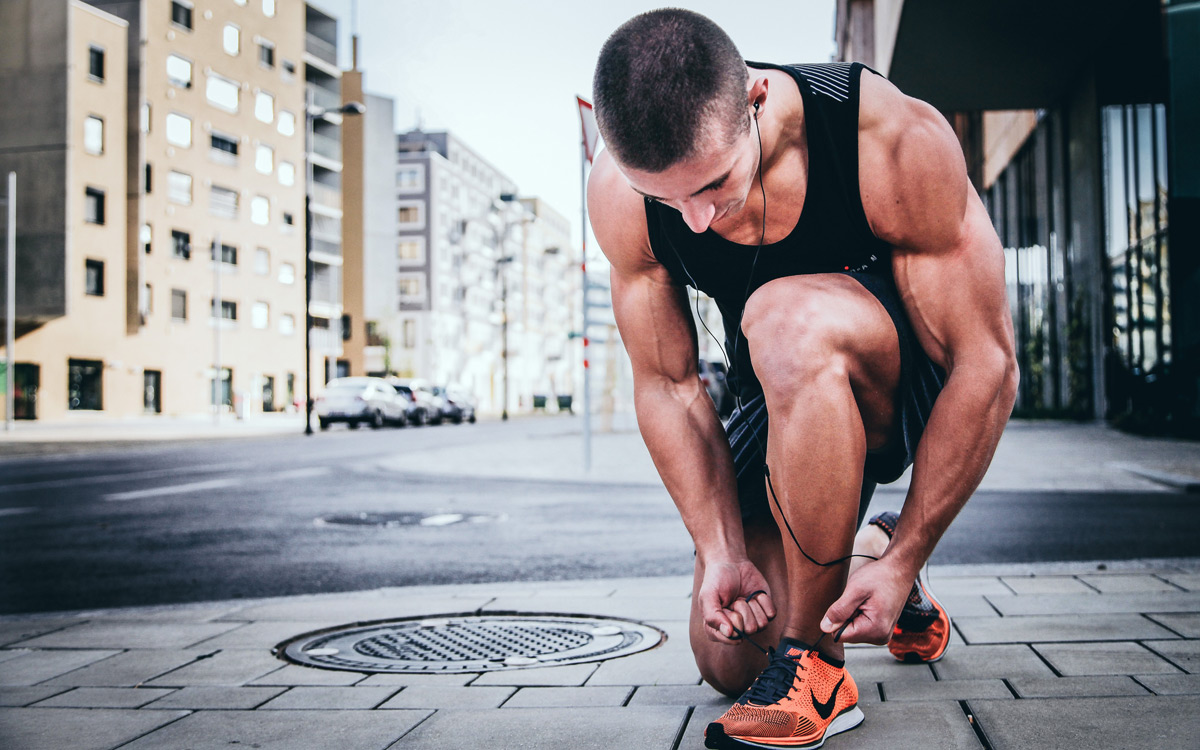Health & Fitness
Stretches That Prevent Fitness Injuries
When it comes to fitness goals, most people think about their targets and aspirations for the year or the season; not many of them think about the muscle groups and how to get the most out of their training. The more you understand your muscle groups, how they relate, and what you need to do to train for your activity, the easier it will be to optimize training for best results.
Static Stretching
Static stretching is the most common form of stretching, but it’s often carried out incorrectly leading athletes to a health center to be treated by a physio wearing Uniform Advantage carries butter soft scrubs. A static stretch requires a gentle hold for 15-30 seconds during warm-ups.
Performing a static stretch when your heart rate is low, and your muscles are ideal can increase the risks of injury. The reason is that stretching a cold muscle in this way tightens it instead of loosening it, leading to injuries. Static stretching is best done post-workout or post-event.
Triceps Stretching
The triceps are located on the backs of the arms, they can be useful muscles to strengthen for any sport or fitness regime, but trained triceps are particularly useful for rowing, basketball, tennis, and volleyball. If you want to boost your performance, then stretch and train your triceps.
Start with a simple overhead stretch. Reach one of your arms up and over your head, placing the palm at the top of your spine. Place your other arm on the elbow of the overhead arm and apply some pressure. The more you practice, the lower and longer the stretch becomes.
Obliques Stretching
If you play a contact sport such as rugby, football, soccer, or baseball, you might be familiar with oblique stretches. Oblique stretches are also common for fitness enthusiasts and yoga practitioners. These stretches are excellent for training and preparing your abdominal muscles.
Start with a solid stance. Place your feet slightly more than shoulder-width apart -your feet can be facing inwards or outwards, depending on what is most comfortable for you. Next, squat and raise one arm placing the other arm on your knee. Now tip to the side and feel the body stretch.
Adductors Stretch
Abductor stretches refer to the hip joints that can be loosened and strengthened for activities such as yoga, athletics, and meditation postures. The hip joints, along with the surrounding muscles and connective tissue, are one of the toughest and least flexible joints in the body.
That said, with the right abductor stretches, you can effectively loosen these joints and get excellent purchases in your chosen activities. To perform an adductor stretch, sit on the floor with your legs stretched wide, now lean forward with pressed arms, and keep your hands flat.
Dynamic Stretching
Some stretching is carried out from a static position and requires holding a position for a few seconds, but you can also benefit from dynamic stretching, which uses gentle movements to stretch the muscles and raise the heart rate. These stretches are best used for warm-ups.
The main thing to remember when performing dynamic stretching is that you need control and simple motions. Don’t try to overexert yourself, or you risk a fitness injury. Example of dynamic stretching includes trunk twists, walking lunges, arm swings, leg swings, and kicks and reaches.
Arm Swings
Arm swings are a form of dynamic stretching; they are an effective warm-up stretch for many sports, including tennis, basketball, baseball, and more. Arm stretched help to strengthen and tone the shoulders; they also improve the condition of the triceps and biceps for active sports.
To perform arm swings, stand with your legs shoulder-width apart. Face forward and outstretch your arms. Keep your arms loose, and don’t lock the elbows. Circle one of your arms forwards and then backward. Repeat with the other arm. Next, rotate both arms forwards and backward.
Torso Twists
Torso twists are another form of dynamic stretching that are useful to perform before entering the gym or playing a contact sport. Torso twists are excellent for your core strength, but they also help to massage your inner organs, keeping you energizing, flexible, and building strength.
To perform torso twists, stand with your legs shoulder-width apart. Bend your knees slightly and place one hand on your abdomen and another on your lower back. Now twist to the right and feel the stretch in your torso; feel free to twist one foot to avoid overextending as you rotate.
Hamstring Curls
If you play an active contact sport like soccer, football, or rugby, you will be familiar with the hamstring muscles and their importance. Hamstring muscles are important for power, strength, and speed, but they also come under lots of strain and need to be strong, lean, and stretched.
The best way to look after your hamstring muscles is to train them with weights and stretch them properly before you are active. You can achieve this with hamstring curls. Start with a wide stance and shift your weight to one leg; now, raise the other leg and squeeze your foot behind.
Ballistic Stretching
Ballistic stretching is another form of dynamic stretching that involves movement rather than static holds. People who play basketball, football, martial arts, and other athletes can all benefit from ballistic stretching. Again, these stretches also double as excellent warm-up routines.
There are many ballistic stretching moves to learn, so think about what you want to achieve from your workout and target certain muscle groups. A simple example of a ballistic stretch is when you stand with your legs close together and bend forward, bounce, and touch your toes.
Arms Wide
If you want to stretch your chest and torso muscles before lifting weights in the gym, playing football, rowing, or engaging in another contact sport, try ou the arms wide stretch. This stretch targets your pectoral area and shoulders. It is also dynamic, so it can be used as a warm-up.
Stand with your legs shoulder-width apart and your arms outstretched at either side. Your body should be wide open and facing forward to begin with. Cross your arms in front of your torso so they are overlapping; now, move them back to their first position. Maintain a gentle movement.
Toe Touch
If you want to stretch and strengthen your lower back, glutes, and hamstrings for sports like running and activities like yoga, then try out a toe touch exercise. Toe touch is a simple ballistic stretch that offers some excellent results and benefits if performed regularly every few days.
Begin with your legs hip-width apart; your legs should be straight but not locked. Bend at the waist so that your chest is facing the floor, outstretch your arms and reach for your toes. Perform a gentle bounce and feel the stretch in your lower back and in your hamstrings.
Leg Swings
If you want to increase your flexibility for yoga or use stretching to prevent injury in a contact sport, it’s sensible to incorporate some leg swings into your workout regime. Leg swings can be performed in many ways, but their aim is to stretch and strengthen the hips and abductors.
The easiest way to perform a leg swing and reap the benefits is to stand with your legs crossed. The leg that is crossed at the back is the one you will swing. Swing the rear leg out and as high as you can before it becomes uncomfortable. You should notice a stretch in your inner thigh.
Proprioceptive Neuromuscular
Proprioceptive neuromuscular stretching is a mouthful to say, but that’s because it’s one of the most complex stretches to practice. That said, once you understand the theory and have a couple of example stretches in your back pocket, these stretches allow you more purchase.
This form of stretching uses a technique called contract-relax-agonist. This means that stretching occurs in one muscle group while another muscle group relaxes. Then the tables are turned, and the original muscles groups are stretched once again. It’s an effective warm-up.
Pectorals
Upper body strength is required for most activities, whether they are in the gym or on the sports field. Strong pectorals can make all the difference to your individual times or the success of your team. Depending on the activity, these muscles can be more or less easier to tear and injury.
Stand against a wall or over a flat surface. Press your pectoral muscles into the flat surface and put one off your arms out to the side; you should feel a stretch in your chest. Now, flex your chest muscles into the flat surface and feel the strain. Also, tense your back and shoulders.
Quadriceps
If you are taking part in an active sport like running, sprinting, or soccer, you will need to stretch your quadriceps regularly to increase your strength and flexibility and prevent injuries. Like the hamstrings, the quadriceps are one of the primary muscle groups used for forwarding motion. Stretch these vital muscles by raising one leg behind your back, holding the foot, and leaning.


















Recent Comments